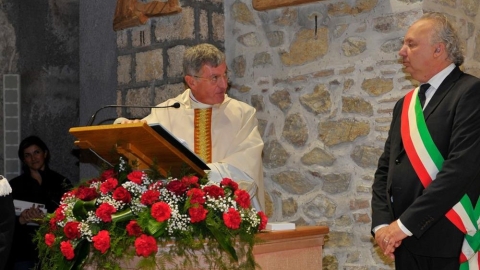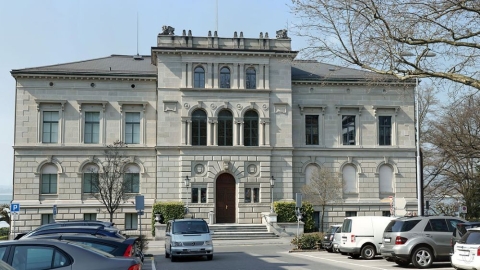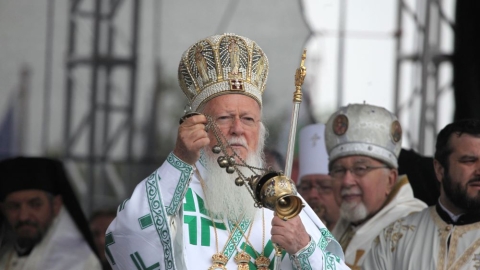Archbishop Simon’s Attempt at Wit
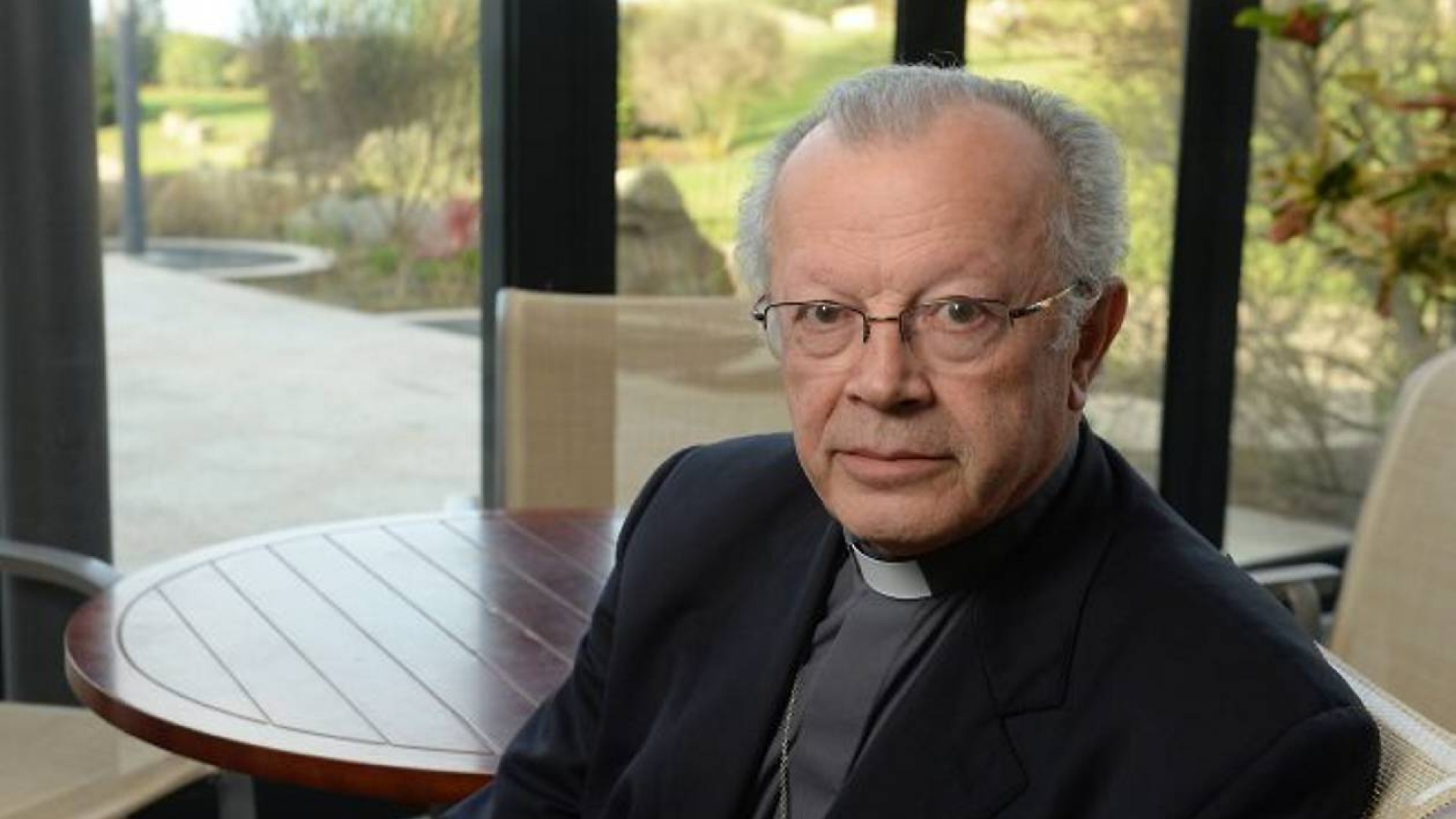
Abp Hippolyte Simon
Archbishop Hippolyte Simon is the archbishop emeritus of the diocese of Clermont (France). He resigned in 2016 for health reasons. But he has found time in his retirement to share with the readers of the – once Catholic – magazine La Vie his reaction to Fr. Davide Pagliarani’s election as head of the Society of St. Pius X on July 11.
In a letter far too lengthy for an idea far too limited, the prelate explained that with a priest at the head of a priestly society, the work founded by Archbishop Marcel Lefebvre has once again become “a Church with a ‘presbyterian’ structure” (sic). What does he mean? It was the Catholic Church that approved the statutes of the Society of St. Pius X!
Here is his argument:
The Superior General is once again a priest, in the person of the Italian Fr. Davide Pagliarani. And this priest is thus established as ‘head’ over three bishops! From 1988 to 1994, it was Fr. Schmidberger. When Bishop Fellay succeeded him in 1994, Econe became ‘episcopal’ once again. A bishop was the head of the Society. This seemed more in keeping with the great Catholic Tradition.
Archbishop Simon clearly does not know the great Catholic Tradition he mentions very well. On the contrary, the Holy See prefers congregations to be governed by priests and not bishops. When a Chapter elects a bishop, an indult from the pope is ordinarily required. When Archbishop Lefebvre was elected Superior General of the Holy Ghost Fathers in 1962, he succeeded a priest who had governed a society of 3,382 priests that had also given 46 bishops to the Church. Pope John XXIII had to confirm this election because it was an exception to Church law, the law of “the great Catholic Tradition”! Six years later, in 1968, Archbishop Lefebvre’s successor as head of the Spiritan congregation was a priest, like its founder, Fr. Libermann. And like so many other congregations governed by priests, without any Hippolyte Simon taking offense.
Indeed, a bishop governs a diocese. But the Society of St. Pius X is not a diocese. And even if one day in a hypothetical future, a Prelature were to place a bishop at the head of the Society, this would not keep the SSPX from being governed today in a perfectly Catholic way by a priest, like the societies of apostolic life that are legion in the Church.
A Cheap Shot
The conclusion of the archbishop emeritus of Clermont offers a glimpse of lucidity: “I do not have the competence to offer a more in-depth commentary on how the Society of St. Pius X is governed.” But it is immediately followed by a cheap shot:
I simply take the liberty of finding it a bit strange that on the pretext of saving Catholic Tradition, they apply the principles proposed by John Calvin then developed by Ulrich Zwingli in Switzerland and John Knox in Scotland… for those who know what I mean!
The reader is expected to laugh and be entertained by the unavowed depth of a remark meant to be spiritual and full of inspiration. The truth is that Archbishop Simon thinks he is being witty but is ignorant of the history of the Church and the practice of Rome. Sad!
That said, Archbishop Simon implicitly expresses an idea that is still wide-spread. He clearly considers the Society of St. Pius X schismatic. It should therefore adopt a governmental structure like that of a “small Church”, a “parallel Church”. If it elects a priest as head, its form becomes Presbyterian. If it chooses a bishop, it is Espiscopalian. Simple, simplistic in fact, but quite effective in denigrating and cataloging the Society…
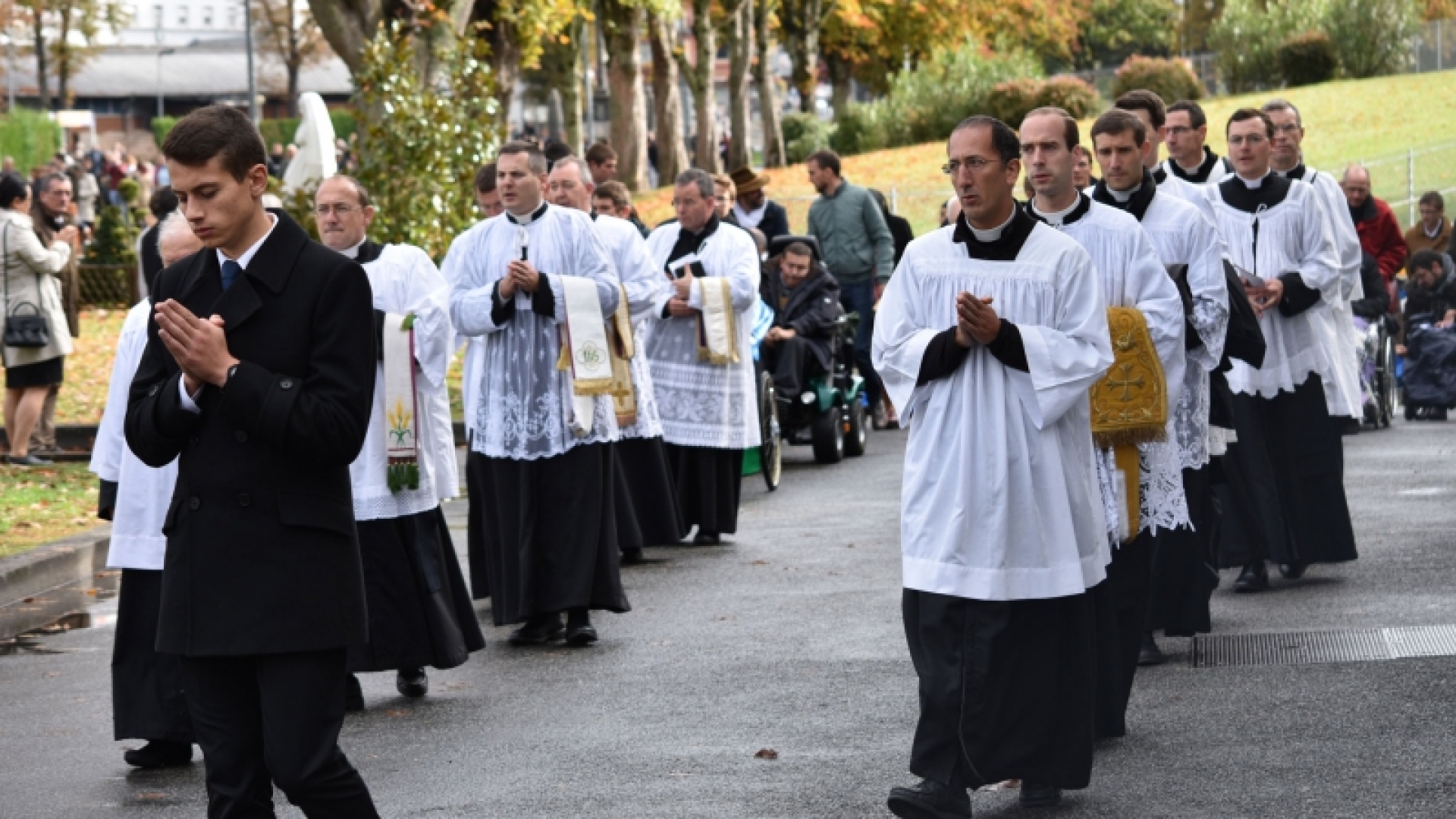
Procession à Lourdes.
A Work of the Church That Defends the Catholic Faith
But the Society of St. Pius X is a work of the Church. It follows the laws of the Church and their constant practice. The accusation of schism regularly made against it has never held up. It recognizes the pope as the head of the Church, of her hierarchy here below, and the precise conditions of the episcopal consecrations in 1988 have sufficiently shown that Archbishop Lefebvre was careful not to break off from Rome, refusing to confer any jurisdictional power on the auxiliary bishops he consecrated for the Society.
While he did disregard a law of ecclesiastical discipline, this was not for the motives that constitute a schism: a refusal of the unity of the Church or to submit to the successor of Peter, a deliberate and voluntary rejection of the authority in itself. The attitude of the Society of St. Pius X is not explained by a rebellion against the legitimate authority or the denial of the dogma of the unity of the Church founded on Peter. It is founded on the combat for the Faith, the combat that any well-born and faithful son of the Church has a duty to fight. It does not pretend to replace the Church but only to serve her. It does not seek to overturn the papacy, like Calvin, Zwingli and Knox dreamed of doing, but rather to defend the Apostolic See in the Faith and in fidelity to the Magisterium of all time.
In any case, it has been ages since the accusation of schism was legal tender. Many bishops realize this, even the pope. On July 18, 2018, the secretary of the Ecclesia Dei Commission that depends on the Roman Congregation for the Doctrine of the Faith, publicly declared, after so many others, that “it is absolutely false to claim that the SSPX is schismatic from a formal, canonical point of view.”
If the society of Catholic priests founded by Archbishop Lefebvre is not schismatic, it is high time Archbishop Simon treated it as such. Even in retirement, it is good to remain reasonable and not to lose one’s mind.
-- Fr. Christian Thouvenot
Sources: La Vie / FSSPX.News – 10/15/2018


